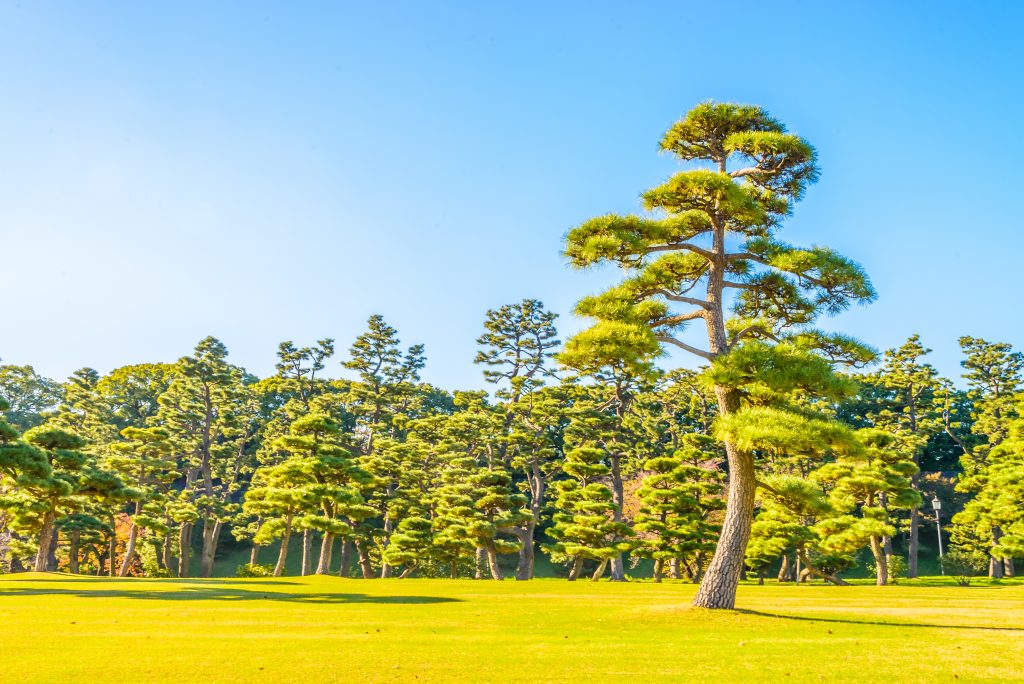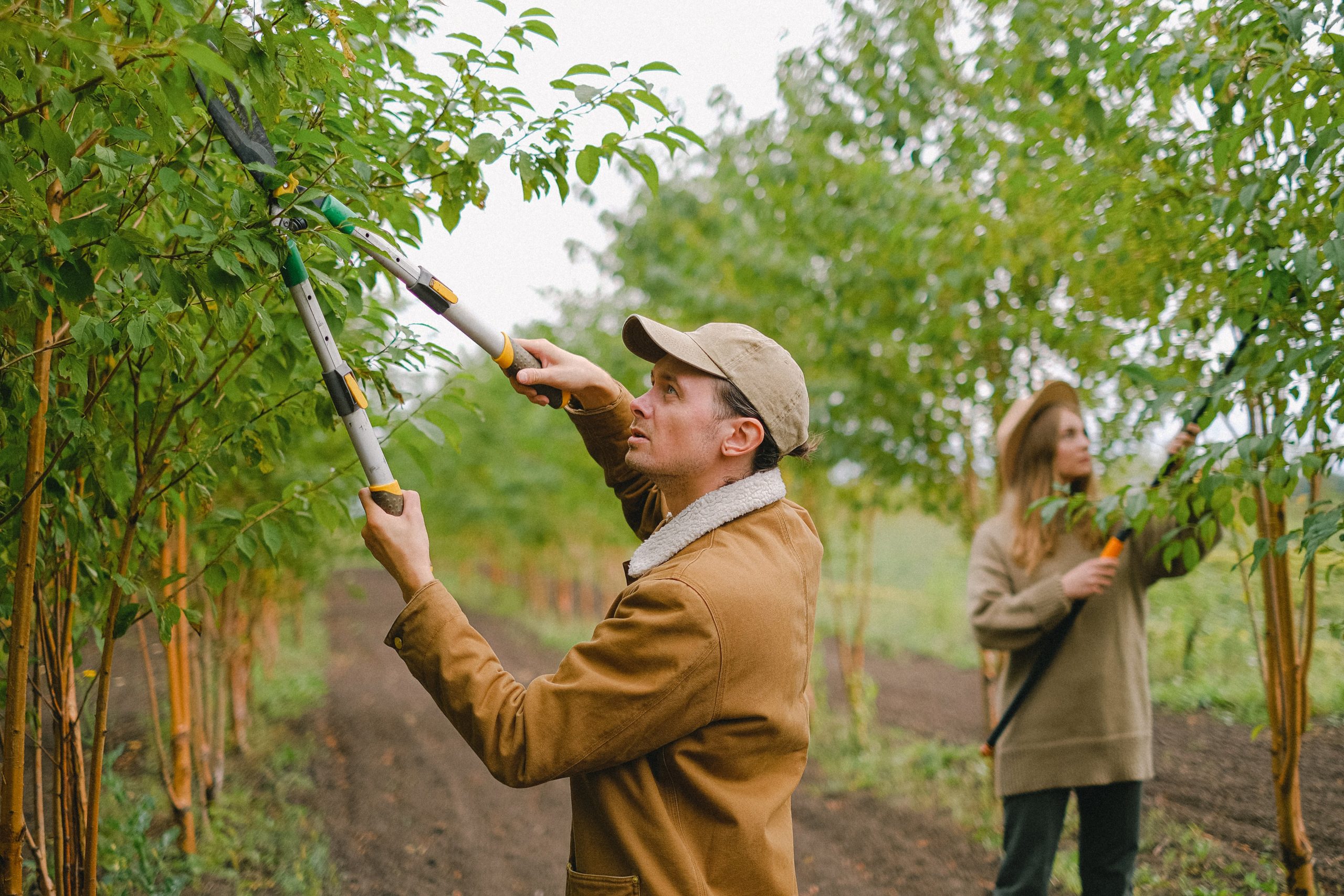THE PROS AND CONS OF TREE TOPPING
THE PROS AND CONS OF TREE TOPPING
Tree Topping: Tree topping, also known as heading, stubbing, or dehorning, refers to the practice of severely cutting back the upper crown of a tree to reduce its height or size. This often involves removing large branches and foliage, leaving behind stubs or branches that are too small to properly support new growth. While topping was once a common approach to managing tree size, it has garnered criticism from arborists and tree care professionals due to its negative impacts on tree health, structure, and aesthetics.

Prevalence: Tree topping was historically a widely practiced method for reducing the size of trees, especially in urban and suburban landscapes where space constraints and aesthetic preferences drove the desire for shorter trees. However, as our understanding of tree biology and proper pruning techniques has evolved, the prevalence of tree topping has declined, particularly among professional arborists and those knowledgeable about responsible tree care.
Despite the growing awareness of its drawbacks, tree topping can still be observed in certain areas, often driven by misconceptions, lack of awareness, or misguided attempts to control tree growth. Topping might also be favored due to its immediate visual results, as it provides instant clearance of branches and can create the illusion of a more compact tree.
However, as the negative consequences of tree topping have become more apparent, efforts to discourage its use have increased. Professional arborists and organizations dedicated to responsible tree care now advocate for alternative pruning methods that prioritize tree health, structural integrity, and long-term aesthetics.
Tree topping’s prevalence varies depending on factors such as location, awareness of proper pruning practices, and the availability of trained arborists. In areas with a strong emphasis on sustainable landscaping and responsible tree care, tree topping is becoming less common due to the understanding of its potential harms to trees and the environment.
In summary, while tree topping was once prevalent as a method for reducing tree size, its negative impacts on tree health and structure have led to a decline in its use. As the importance of responsible tree care continues to gain recognition, alternatives to tree topping are being embraced to ensure the well-being of trees and the landscapes they inhabit.
Importance of Discussing the Pros and Cons of Tree Toppings
Discussing the pros and cons of tree topping is crucial for promoting informed and responsible tree care practices. This discussion helps property owners, landscapers, and the general public make well-informed decisions about tree pruning methods that align with the long-term health, aesthetics, and safety of trees and their surrounding environment. Here’s why discussing the pros and cons of tree topping is important:

- Informed Decision-Making: Understanding the potential benefits and drawbacks of tree topping empowers individuals to make educated choices about tree care methods that best suit their goals and priorities.
- Tree Health and Longevity: Highlighting the negative impacts of tree topping on tree health, such as weak regrowth and structural issues, encourages people to opt for alternative pruning methods that support the long-term vitality and well-being of trees.
- Aesthetic Considerations: Discussing how tree topping can result in unnatural growth patterns and reduce a tree’s aesthetic value over time helps individuals make choices that align with their desire for visually pleasing landscapes.
- Ecosystem Health: Understanding that tree topping can contribute to habitat loss and negatively impact biodiversity encourages individuals to choose pruning methods that support a healthy ecosystem.
- Cost Considerations: Discussing the potential costs associated with frequent maintenance due to rapid regrowth and potential structural issues can motivate individuals to invest in responsible pruning practices that offer long-term cost savings.
- Community Awareness: Educating the public about the drawbacks of tree topping fosters a culture of responsible tree care within communities, leading to healthier urban forests and landscapes.
- Professional Guidance: By discussing the cons of tree topping, individuals are more likely to seek the advice of certified arborists and tree care professionals, leading to better-informed decisions and higher-quality tree care.
- Minimizing Harm: Promoting an understanding of the negative impacts of tree topping helps prevent well-meaning but misinformed individuals from inadvertently causing harm to trees through improper pruning practices.
- Long-Term Benefits: Emphasizing the benefits of alternative pruning methods, such as selective branch removal and proper tree care, helps individuals appreciate the long-term positive outcomes for their trees and landscapes.
- A Balanced Perspective: Discussing both the pros and cons of tree topping provides a comprehensive view of the practice, allowing individuals to weigh the immediate benefits against the potential long-term consequences.
In essence, discussing the pros and cons of tree topping promotes responsible tree care that prioritizes tree health, aesthetics, and the well-being of the surrounding environment. Encouraging a shift away from damaging practices like tree topping contributes to the overall sustainability and beauty of urban and suburban landscapes.
Pros of Tree Topping
The practice of tree topping involves cutting back the upper crown of a tree, often resulting in a reduction of its height or size. While tree topping has significant drawbacks, some proponents argue that it can offer certain benefits in specific situations. However, it’s important to note that these perceived benefits should be carefully weighed against the potential long-term consequences. Here are some of the pros often associated with tree topping:

Tree
- Reduced Tree Height: Tree topping can effectively reduce the overall height of a tree. This can be useful in situations where the tree’s growth interferes with utility lines, buildings, or other structures. By reducing the tree’s height, potential conflicts with nearby structures can be minimized.
- Immediate Aesthetic Improvement: Tree topping can provide a quick solution for reducing the size of a tree and can enhance the visual appeal of a landscape. It can create a neater appearance, especially if the tree was previously overgrown or unevenly shaped.
- Emergency Hazard Reduction: In cases where a tree has become hazardous due to dead or unstable branches, topping can quickly address these issues and reduce the risk of falling branches causing harm to people, property, or vehicles.
- Encourages New Growth: Topping stimulates the growth of new shoots and branches from the cut ends, which can lead to a denser foliage canopy over time. This regrowth can give the tree a rejuvenated appearance.
- Temporary Solution for Shading Issues: Topping can provide temporary relief from excessive shading caused by a dense canopy. This might be desirable in landscapes where sunlight is needed for other plants or outdoor activities.
While these perceived benefits may seem advantageous, it’s important to consider the potential drawbacks and long-term impacts of tree topping. The cons of tree topping, such as weakened branch attachments, increased risk of decay, unnatural growth patterns, and reduced tree longevity, often outweigh the immediate benefits. In many cases, alternative pruning methods that prioritize tree health, aesthetics, and structural integrity are more appropriate for achieving desired outcomes without compromising the long-term well-being of the tree.
Cons of Tree Topping
Tree topping, despite its potential perceived benefits in some situations, is widely criticized by arborists and tree care professionals due to its numerous negative consequences. The drawbacks of tree topping far outweigh any short-term advantages it might offer. Here are the significant cons associated with tree topping:
- Structural Weakness: Topping removes a significant portion of a tree’s canopy, resulting in large, exposed wounds that are slow to heal. The regrowth that follows tends to be weakly attached branches with poor structural integrity, making them more susceptible to breakage, especially during windstorms.
- Increased Risk of Decay and Disease: The large wounds created by tree topping serve as entry points for insects, pathogens, and decay-causing fungi. The tree’s natural defense mechanisms are compromised, leading to a higher risk of infections and decay within the tree’s tissues.
- Unnatural Growth Patterns: After topping, the tree responds with rapid, weak regrowth from the cut ends. This growth is often dense, unbalanced, and visually unappealing. It can lead to an unnatural shape that detracts from the tree’s aesthetics.
- Reduced Longevity: Topped trees are more stressed and vulnerable to various environmental factors, including weather extremes and pest attacks. As a result, their overall health declines, and their lifespan is significantly shortened compared to properly pruned and maintained trees.
- Increased Maintenance Needs: The rapid regrowth of weak branches necessitates frequent and costly maintenance to control the new shoots. This cycle of repeated topping and regrowth leads to ongoing expenses.
- Expense Over Time: While tree topping might seem cost-effective in the short term, the cumulative expenses of managing regrowth, treating infections, and addressing structural problems can ultimately surpass the initial savings.
- Habitat Loss and Biodiversity Impact: Topping removes nesting sites and habitats for wildlife, diminishing biodiversity in the local environment. Trees play a vital role in supporting ecosystems, and damaging their structure can disrupt these ecosystems.
- Aesthetic Decline Over Time: The initial visual improvement after tree topping is often short-lived. The regrowth results in a thick, bushy appearance that can appear unsightly and messy over time.
- Contradiction to Best Practices: Topping is inconsistent with the principles of proper tree care and arboriculture. Certified arborists and tree care professionals emphasize selective branch removal, proper pruning techniques, and overall tree health as more effective and responsible approaches.
- Potential Safety Hazards: Topped trees are more prone to branch breakage and instability, posing safety risks to people, property, and nearby structures.
In summary, the negative consequences of tree topping are extensive and can lead to irreversible harm to trees, ecosystems, and aesthetics. As an alternative, responsible tree care practices that prioritize tree health, structural integrity, and long-term aesthetics are recommended to ensure the well-being of trees and the landscapes they inhabit.
About Murray, Utah
Murray is a city situated on the Wasatch Front in the core of Salt Lake Valley in the U.S. state of Utah. Named for territorial governor Eli Murray, it is the state's fourteenth largest city. According to the 2020 census, Murray had a population of 50,637. Murray shares borders with Taylorsville, Holladay, South Salt Lake and West Jordan, Utah. Once teeming with heavy industry, Murray's industrial sector now has little trace and has been replaced by major mercantile sectors. Known for its central location in Salt Lake County, Murray has been called the Hub of Salt Lake County. Unlike most of its neighboring communities, Murray operates its own police, fire, power, water, library, and parks and recreation departments and has its own school district. While maintaining many of its own services, Murray has one of the lowest city tax rates in the state.
Neighborhoods in Murray, Utah
Murray Oakes, Grant Park, Southwood Park, Murray Park, Murray Park Restrooms, Willow Pond Park, Neighborhood Veterinary Care
Things To Do in Murray, Utah
Bus Stops in Murray, Utah to Truco Services, Inc.
Bus Stop in Murray Central Station (Bay C) Murray, Utah to Truco Services, Inc.
Bus Stop in State St @ 4801 S Murray, Utah to Truco Services, Inc.
Bus Stop in Murray North Station Murray, Utah to Truco Services, Inc.
Bus Stop in State St @ 4949 S Murray, Utah to Truco Services, Inc.
Bus Stop in Murray Central Frontrunner/Trax Station Murray, Utah to Truco Services, Inc.
Bus Stop in Murray Blvd / Vine St (SB) Murray, Utah to Truco Services, Inc.
Bus Stop in State St @ 3925 S Murray, Utah to Truco Services, Inc.
Bus Stop in State St @ 4824 S Murray, Utah to Truco Services, Inc.
Bus Stop in State St @ 5223 S Murray, Utah to Truco Services, Inc.
Bus Stop in Murray Blvd / Allendale Dr (NB) Murray, Utah to Truco Services, Inc.
Bus Stop in Murray Blvd @ 5039 S Murray, Utah to Truco Services, Inc.
Bus Stop in State St @ 4721 S Murray, Utah to Truco Services, Inc.
Driving Directions in Murray, Utah to Truco Services, Inc.
Driving Directions from Woodruff Tree Trimming and Removal to 4640 Commerce Dr, Murray, UT 84107, USA
Driving Directions from Reliable Tree Care to 4640 Commerce Dr, Murray, UT 84107, USA
Driving Directions from Tree Pro-Tech to 4640 Commerce Dr, Murray, UT 84107, USA
Driving Directions from Prestige Tree And Landscape to 4640 Commerce Dr, Murray, UT 84107, USA
Driving Directions from Excellence Tree & Landscape to 4640 Commerce Dr, Murray, UT 84107, USA
Driving Directions from Amen Trees to 4640 Commerce Dr, Murray, UT 84107, USA
Driving Directions from Tim's Tree Care to 4640 Commerce Dr, Murray, UT 84107, USA
Driving Directions from Jordan Tree Service - Murray to 4640 Commerce Dr, Murray, UT 84107, USA
Driving Directions from Arbor Works to 4640 Commerce Dr, Murray, UT 84107, USA
Driving Directions from Diamond Tree Experts to 4640 Commerce Dr, Murray, UT 84107, USA
Driving Directions from Green Tree Arborist to 4640 Commerce Dr, Murray, UT 84107, USA
Driving Directions from TruCo Services to 4640 Commerce Dr, Murray, UT 84107, USA
Reviews for Truco Services, Inc. Murray, Utah
Emily Abercrombie
We had a great experience with TruCo! They were well priced, responsive and prompt. Michael was a pleasure to work with and gave us advice on which plants to put in where we took out our ugly old shrubs. I would highly recommend this company!!!
Michelle Turpin
TruCo Services gets 5 stars from us for customer service. We experienced a few issues with their services this last year and Rob Eccles in senior management, stepped in and immediately handled our issues. He was very committed to making sure they understood our expectations and would execute to make us happy.
Siobhan Billingsley
I work for a property management company and have the pleasure of working with Rob at a community in Sandy. He has been incredible to work with and always responds in a timely manner. He knows all the homeowners by name and address and is aware of all the "problem" areas when it comes to sprinklers. I never have to worry about following up with him because he always reaches out to provide me with an update. If you're looking to work with someone who takes pride in their job, is professional, and can solve the worst landscaping problems thrown your way, Rob is your guy. Thank you, Rob for all you do!
Jaime S.
We have used Truco at 2 of the complexes we manage, they have been great to work with. Good quality service, outstanding customer service with good communication. That's hard to find these days. I highly recommend them. Travis has been awesome to work with.
Jerusha Smart
We use TruCo for a majority of our properties and our home. While other landscaping companies we use come and go for various reasons like cost, communication issues, work performance, etc., TruCo is always consistent in price and work. Also, Rob is the best.




